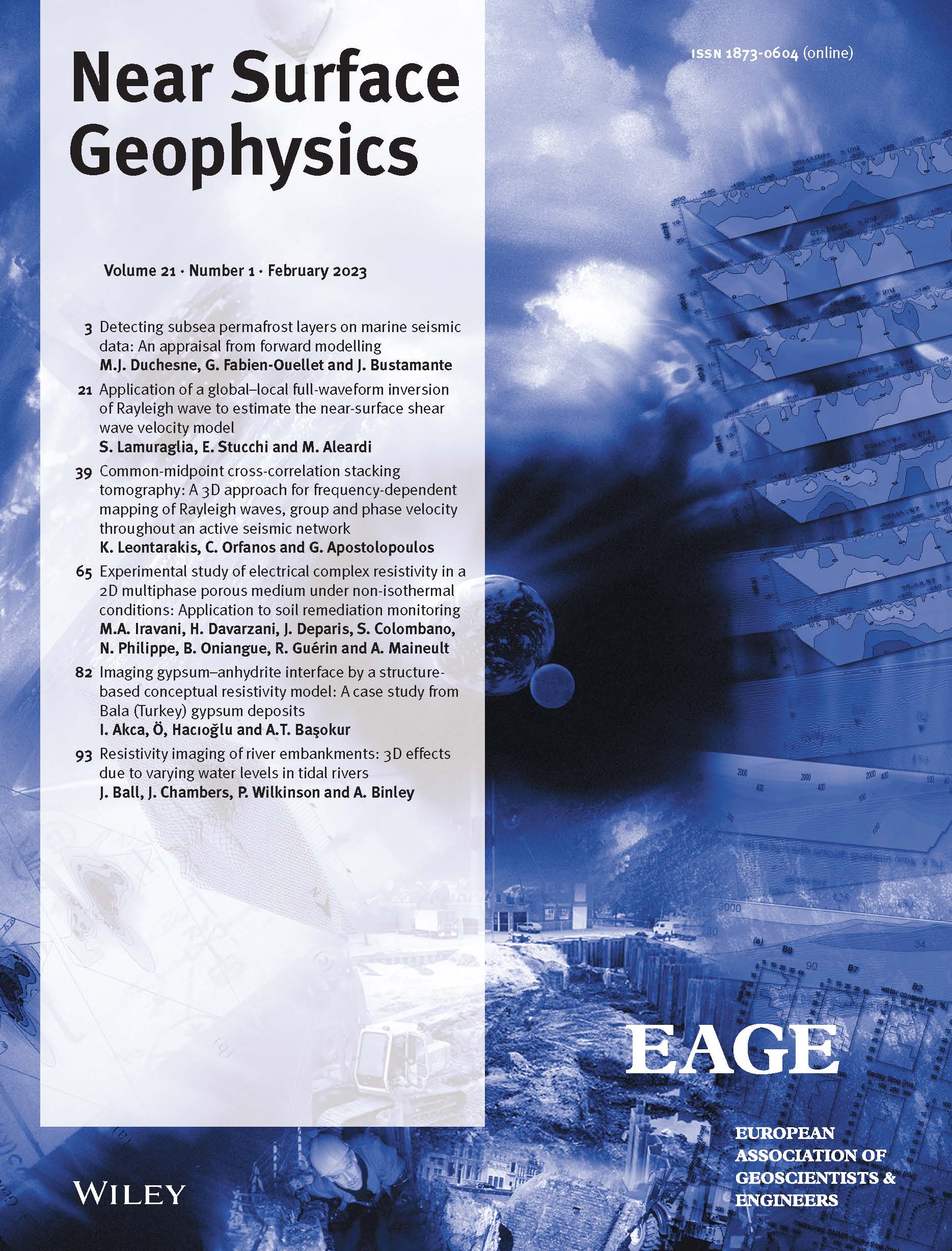
Full text loading...
Altered crystalline catchments are complex to study and model, as they present multi‐scale properties that control their hydrogeological behaviour and that are difficult to capture through a single geophysical imaging technique. Several volumes of interest must be sampled in order that both small‐scale (porosity, layering) and large‐scale (bedrock, weathering, faults) heterogeneities can be captured. We propose a geoelectrical model of the Strengbach catchment (Vosges Mountains, France), aiming at identifying the weathered structures and hydrogeological functioning of the aquifer. This is achieved through electrical resistivity tomography (ERT) and Controlled‐Source Audio‐Magnetotelluric (CSAMT) measurements and the use of appropriate measurement set‐ups. Meters‐scale shallow contrasts in the top soil, catchment‐scale shallow contrasts (top 30 m), and large‐scale vertical contrasts (up to 150 m) were resolved through this methodology. A structural interpretation is proposed, based on information provided by borehole measurements (gamma ray, optical images), analysis of sampled waters, and geological mapping. The limits at depth of the weathered and fractured granite, not detected by ERT, are detected by CSAMT. The analysis showed that the weathering state of the granite controls, at first order, the electrical resistivity signal. Shallow geoelectrical signal (first 30 m) is particularly driven by surface conductivity and hence by the clay content, whereas deep geoelectrical signal may arise from both the ionic content of pore waters and the clay content. A structural model is proposed and discussed. Geoelectrical contrasts revealed several qualities of weathered saprolite between the northern and the southern slopes. The inferred structural model and the distribution of weathered and unweathered crystalline units are considered for their respective effect on the hydrogeology, leading to the proposition of a new hydrogeological conceptual model of the catchment.

Article metrics loading...

Full text loading...
References


Data & Media loading...

